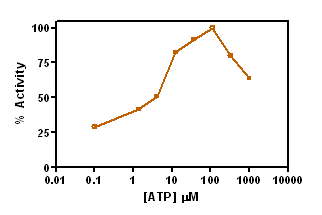CBA101 Sigma-AldrichPI 3-K Assay Kit
Productos recomendados
Descripción
| Replacement Information |
|---|
| Product Information | |
|---|---|
| Form | 100 Tests |
| Format | 96-well plate |
| Kit contains | Assay Buffer, Coordination Buffer, Sensor Stock, Sensor Dilution Buffer, Trivalent Metal Ion, Post Reaction Buffer, and a user protocol. |
| Quality Level | MQ100 |
| Applications |
|---|
| Biological Information | |
|---|---|
| Assay time | 2 h |
| Sample Type | Purified enzyme |
| Physicochemical Information |
|---|
| Dimensions |
|---|
| Materials Information |
|---|
| Toxicological Information |
|---|
| Safety Information according to GHS |
|---|
| Product Usage Statements | |
|---|---|
| Intended use | The Calbiochem® PI 3-K Assay Kit is a homogeneous assay designed to measure PI 3-K activity using purified enzyme preparations. |
| Packaging Information |
|---|
| Transport Information |
|---|
| Supplemental Information | |
|---|---|
| Kit contains | Assay Buffer, Coordination Buffer, Sensor Stock, Sensor Dilution Buffer, Trivalent Metal Ion, Post Reaction Buffer, and a user protocol. |
| Specifications |
|---|
| Global Trade Item Number | |
|---|---|
| Número de referencia | GTIN |
| CBA101 | 0 |
Documentation
PI 3-K Assay Kit Ficha datos de seguridad (MSDS)
| Título |
|---|
PI 3-K Assay Kit Certificados de análisis
| Cargo | Número de lote |
|---|---|
| CBA101 |
Referencias bibliográficas
| Visión general referencias |
|---|
| Ruckle, T., et al. 2006. Nat. Rev. Drug Discov. 11, 903. Zhao, J.J., et al. 2006. Proc. Natl. Acad. Sci. USA 103, 16296. Zhao, J.J. and T.M Roberts. 2006. Sci STKE 365, 52. Zhao, J.J., et al. 2005. Proc. Natl. Acad. Sci. USA 102, 18443. Meier T.I., et al. 2004. Protein Expr. Purif. 35.218. |












